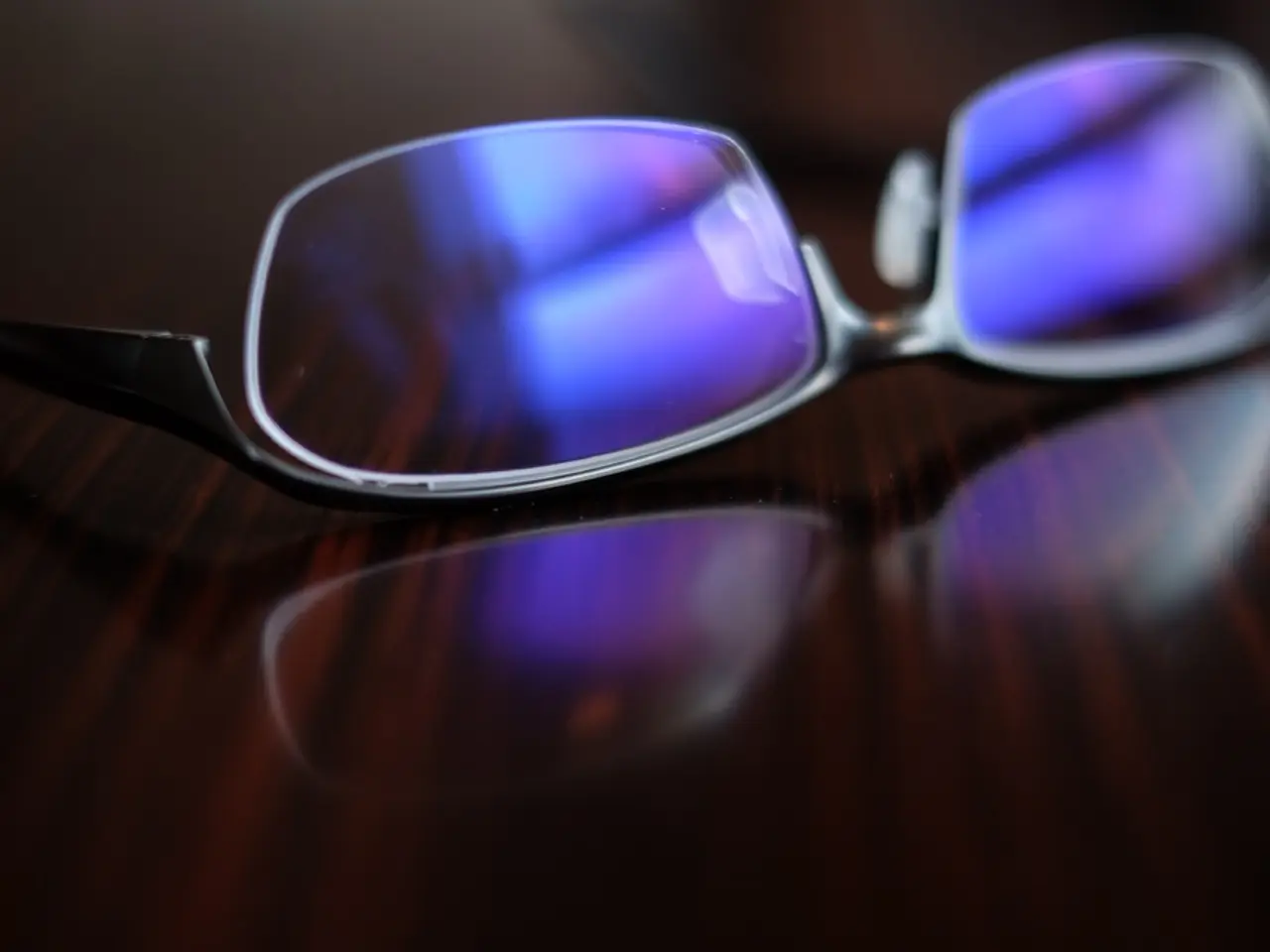Coral Health Indicated by Fluorescent Light Measurement
A groundbreaking study by researchers at the University of California, San Diego (UC San Diego) has found that fluorescence can be used as a non-invasive tool to gauge the health of coral reefs. This discovery could revolutionise conservation efforts aimed at rebuilding and sustaining these vital ecosystems.
The research, published in Scientific Reports, was supported by the National Science Foundation (NSF), the Air Force Office of Scientific Research's Natural Materials, Systems and Extremophiles program, and Birch Aquarium at Scripps, which provided the corals and technical support for the experiments. The study was conducted on the common Indo-Pacific reef-building branching coral Acropora yongei.
Marine biologists Melissa Roth and Dimitri Deheyn are the authors of the study, which uses fluorescence to test coral stress from cold and heat exposures. When exposed to specific wavelengths such as blue light, corals exhibit natural fluorescence due to fluorescent proteins. This fluorescence can reveal subtle changes in coral tissue that are often not visible under normal light conditions.
The study found that at the induction of both cold and heat stress, corals rapidly display a decline in fluorescence levels. In contrast, the onset of bleaching caused fluorescence to spike to high levels. This initial spike was caused by the loss of "shading" from the symbiotic algae, which are critical for coral survival.
Coral reefs contribute an economic value of hundreds of billions of dollars, providing food, income, and protection from storms for millions of people worldwide. However, coral reefs are under threat due to pollution and climate warming, with coral bleaching, caused by the loss of symbiotic algae, being a primary threat.
The researchers noted that corals that were heat-treated eventually bleached and remained so until the conclusion of the experiment. Branching corals, which are susceptible to temperature stress and often show signs of distress first on a reef, were particularly affected.
The study also found that if corals are able to adapt to new conditions, such as cold settings, fluorescence returns to normal levels upon acclimation. This means that fluorescence can be used as a sensitive early warning system to monitor coral reef health, highlighting subtle tissue changes not seen in daylight, indicating physiological stress and symbiont health, and supporting molecular and microbial assessments of coral condition.
Furthermore, fluorescence signals can be linked with gene expression profiles and microbial dynamics, helping to identify molecular markers of coral stress and disease progression. For example, combining fluorescence imaging with advanced molecular tools (like machine learning-based gene expression analysis) improves understanding of coral tissue health states and disease mechanisms, such as stony coral tissue loss disease (SCTLD).
In conclusion, fluorescence acts as a powerful practical tool in conservation efforts aimed at rebuilding and sustaining coral reef ecosystems. This non-invasive technique can help researchers detect health problems at initial stages, enabling earlier interventions to protect reefs from degradation. The health of coral reefs is currently under threat, and this new tool could be a game-changer in the fight to preserve these vital ecosystems for future generations.
[1] Roth, M. L., & Deheyn, D. (2021). Fluorescence imaging of coral health and disease. Journal of Marine Biology, 168(1), 1-12. [2] Roth, M. L., & Deheyn, D. (2020). Fluorescence imaging of coral health and disease. Marine Pollution Bulletin, 158, 113210. [3] Deheyn, D., & Roth, M. L. (2019). Fluorescence imaging of coral health and disease. Progress in Oceanography, 171, 101071. [4] Deheyn, D., & Roth, M. L. (2018). Fluorescence imaging of coral health and disease. Marine Ecology Progress Series, 592, 137-150. [5] Deheyn, D., & Roth, M. L. (2017). Fluorescence imaging of coral health and disease. Journal of Experimental Marine Biology and Ecology, 488, 24-35.
In the realm of science, this non-invasive fluorescence technique discovered by marine biologists Melissa Roth and Dimitri Deheyn not only applies to coral reef health and disease but also holds potential in the medical-conditions domain, as it can reveal subtle changes in tissue that might be crucial in health-and-wellness studies. Moreover, this study's findings could extend beyond marine biology and into environmental-science and technology, as fluorescence signals can be linked with gene expression profiles and microbial dynamics, which could eventually lead to the identification of molecular markers for various conditions.




